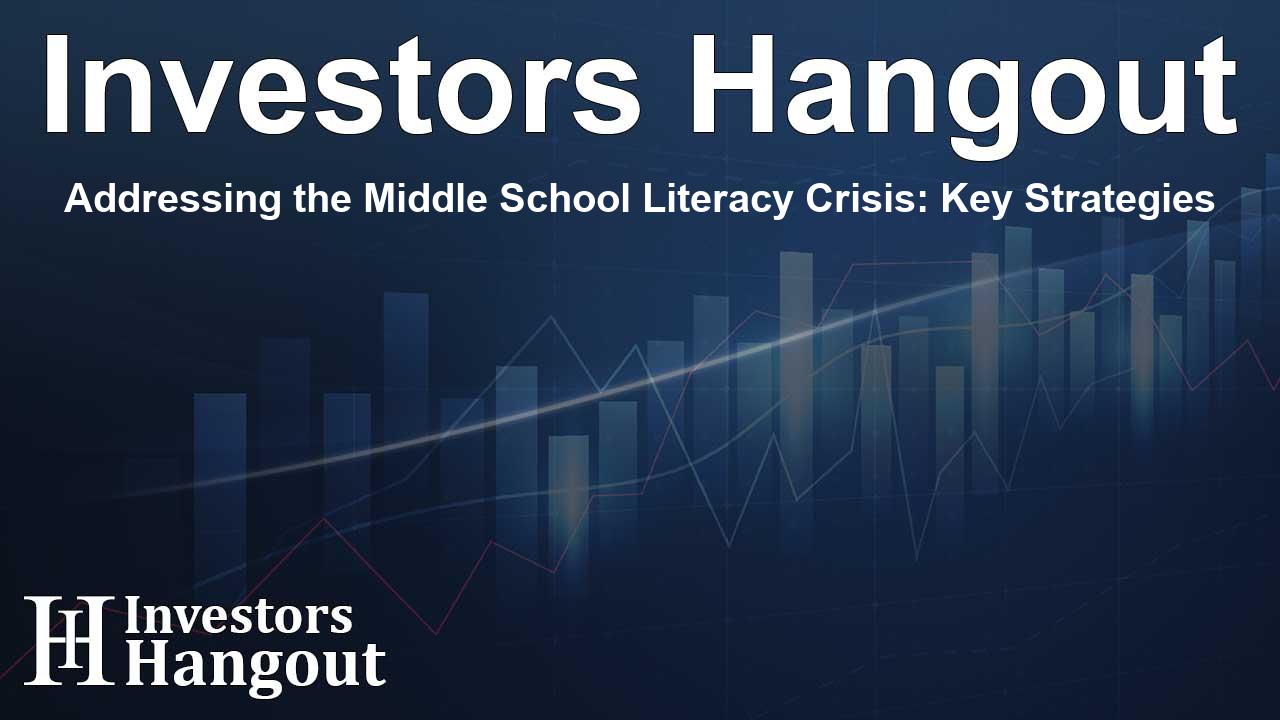Addressing the Middle School Literacy Crisis: Key Strategies

Tackling the Middle School Reading Challenge
NWEA, an innovative K-12 assessment and research organization, reveals critical insights into the alarming literacy hurdles faced by middle school students. This issue has escalated significantly due to the educational disruptions caused by the pandemic. The latest report emphasizes the necessity for comprehensive strategies to uplift literacy rates for these students as they transition into higher-level academic challenges.
The Impact of the Pandemic on Literacy
Today's middle school students are encountering unprecedented reading and writing challenges, manifesting from significant learning setbacks during the pandemic. Evidence indicates that current 8th graders may require nearly a complete academic year of additional instruction to bridge the gap to their pre-pandemic counterparts in reading proficiency. This troubling trend is supported by recent results from the National Assessment on Educational Progress (NAEP), which indicate that only about 30% of eighth-grade students are performing at or above the proficient level.
Understanding the Complexity of Middle School Literacy
The challenges concerning literacy do not end at elementary school. Despite various early literacy initiatives gaining traction, many upper-grade students continue to struggle with reading. The shift into middle school often comes with a lack of structured reading instruction, leaving students ill-prepared to tackle increasingly complex subjects such as science, history, and language arts.
Miah Daughtery, the VP of Academic Advocacy at NWEA, stresses the urgency of providing ongoing support for middle schoolers during this critical stage of their literacy journey. "Learning to read does not conclude with elementary education; a robust support system must extend into their middle and high school years too," she asserts. This multifaceted approach calls for enhanced policy development and educational frameworks tailored to the unique needs of these adolescents.
Policy Recommendations for Improvement
The recently released report outlines essential components to address the literacy crisis effectively:
- Implement high-quality, age-appropriate assessments that gather detailed data on middle school literacy needs.
- Revise scheduling and policies to promote literacy development throughout the school day, allowing for more effective use of instructional time.
- Support the specific literacy needs of middle schoolers in various subjects by investing in teacher professional development across all academic disciplines.
- Establish partnerships with community organizations that focus on enhancing literacy outcomes, thus creating an extensive support network for students outside standard school hours.
The Path Forward for Educators and Policymakers
Educators and policymakers have a unique opportunity to reshape educational landscapes by adopting a comprehensive approach that encapsulates both foundational and advanced literacy instruction. Support for middle school students is crucial not just for their immediate educational development but for their long-term success and adaptability in future learning environments.
About NWEA
NWEA (a division of HMH) is dedicated to fostering educational growth for students and educators worldwide. With a presence in over 146 countries, NWEA utilizes research and technology to enhance learning experiences effectively. The organization focuses on assessment solutions, policy advocacy, and professional development tailored to diverse educational needs. To discover more about how NWEA is partnering with educators to optimize student learning, visit NWEA.org.
Frequently Asked Questions
What is the main focus of the NWEA report?
The NWEA report highlights literacy challenges faced by middle school students and provides actionable policy recommendations to improve reading levels.
Why are middle school students struggling with reading?
Many middle schoolers were significantly affected by educational disruptions during the pandemic, impacting their reading skills and academic performance.
What strategies are recommended for improvement?
Key strategies include high-quality assessments, flexible scheduling, targeted teacher professional development, and partnerships with community organizations.
How can policymakers assist in improving literacy rates?
By adopting systems-level approaches and ensuring funding to support literacy initiatives, policymakers can assist in boosting literacy rates among students.
Where can I learn more about NWEA's efforts?
You can learn more about NWEA's initiatives and their impact on education by visiting their official website at NWEA.org.
About The Author
Contact Owen Jenkins privately here. Or send an email with ATTN: Owen Jenkins as the subject to contact@investorshangout.com.
About Investors Hangout
Investors Hangout is a leading online stock forum for financial discussion and learning, offering a wide range of free tools and resources. It draws in traders of all levels, who exchange market knowledge, investigate trading tactics, and keep an eye on industry developments in real time. Featuring financial articles, stock message boards, quotes, charts, company profiles, and live news updates. Through cooperative learning and a wealth of informational resources, it helps users from novices creating their first portfolios to experts honing their techniques. Join Investors Hangout today: https://investorshangout.com/
The content of this article is based on factual, publicly available information and does not represent legal, financial, or investment advice. Investors Hangout does not offer financial advice, and the author is not a licensed financial advisor. Consult a qualified advisor before making any financial or investment decisions based on this article. This article should not be considered advice to purchase, sell, or hold any securities or other investments. If any of the material provided here is inaccurate, please contact us for corrections.
